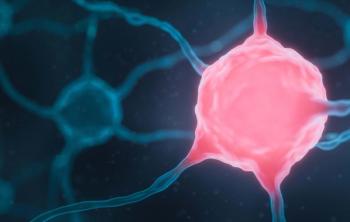
Secondary Malignancies Risk Still in Question Following CAR T-cell Therapy for Lymphoma

A retrospective study sought to assess CRS and ICANS onset and duration, as well as non-relapse mortality causes in patients infused with CAR T-cell therapies.
CancerNetwork® spoke with Nausheen Ahmed, MD, an associate professor in the Division of Hematologic Malignancies and Cellular Therapeutics at the University of Kansas Medical Center. Ahmed addressed retrospective findings that CAR T-cell therapy may lead to secondary malignancies, and if these findings would influence the use of these agents.
Ahmed, lead author of the study, prefaced by iterating that the analysis did not test for secondary malignancies, given that many occur as early as 2 years later, and the study follow-up only tested for 90 days after treatment. She expressed that secondary malignancies are infrequent and not a major issue despite FDA concern and highlighted that these malignancies primarily occur in patients with myelodysplasia, leukemia, or melanoma. She concluded that the findings would not deter her use of the therapies and stressed that both clinicians and patients should be informed about the risk affiliated with them.
The retrospective study reviewed data from 475 patients across 9 centers who received CAR T therapy for relapsed or refractory large B-cell lymphoma from 2018 to 2023. Patients received either axicabtagene ciloleucel (axi-cel; Yescarta; n = 216), tisagenlecleucel (tisa-cel; Kymriah; n = 158), and lisocabtagene maraleucel (liso-cel; Breyanzi; n = 101).
Non-relapse mortality (NRM) was defined as death due to causes unrelated to disease progression and was commonly associated with infectious complications. New-onset CRS and ICANS were portrayed as percentages of patient populations at risk.
Data from the study show new-onset CRS and ICANS, respectively, occurred in 0% and 0.7% of patients with B-cell non-Hodgkin’s lymphoma (NHL) at 2 weeks following CAR T-cell infusion. Additionally, no new cases of CRS occurred after 2 weeks, with 1 additional incidence of ICANS occurring week 3. Additionally, all-cause and non-relapse mortalities, respectively, occurred in 42.8% and 9.5% of all patients, including 46% and 12% of axi-cel recipients, 48% and 7% of tisa-cel recipients, and 27% and 9% of liso-cel recipients (P = .0011; P = .3150).
Transcript:
My study did not capture second primary malignancies because the follow-up was just up to day 90. Within the first 3 months, there aren’t many second malignancies. There are some real-world data coming out [showing] that, even as early as within 2 years [of treatment], there are second primary malignancies. Mostly, those second primary malignancies would be myelodysplasia, leukemia, or skin cancers. The FDA had raised concerns about T-cell malignancies [following] CAR T-cell therapy. That is very rarely seen and is not a major concern. The other second primary malignancies are something that we will be seeing more of as we use more of these therapies.
Would that deter me from using CAR T therapy? I don't think so. We have more choices these days, [such as] bispecifics. Still, the outcomes with CAR T therapy in lymphoma and myeloma are still better than the outcomes with some of these other drugs. [Clinicians] have to think about the efficacy and all those [risks] when considering a therapy. The patients should [also] be informed and know what the risks are.
Reference
Ahmed N, Wesson W, Lutfi F, et al. Optimizing the post-CAR T monitoring period in recipients of axicabtagene ciloleucel, tisagenlecleucel, and lisocabtagene maraleucel. Blood Advances. Published online July 24, 2024. doi:10.1182/bloodadvances.2023012549
Newsletter
Stay up to date on recent advances in the multidisciplinary approach to cancer.





















































































